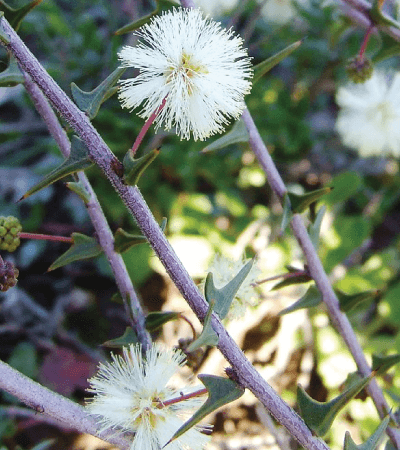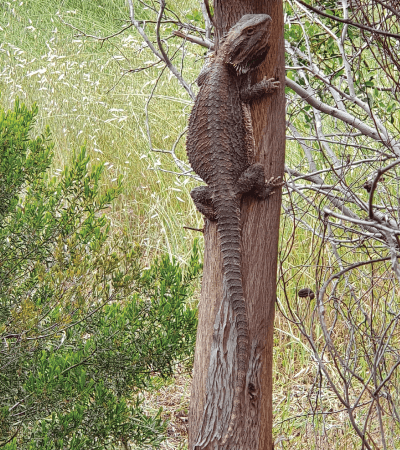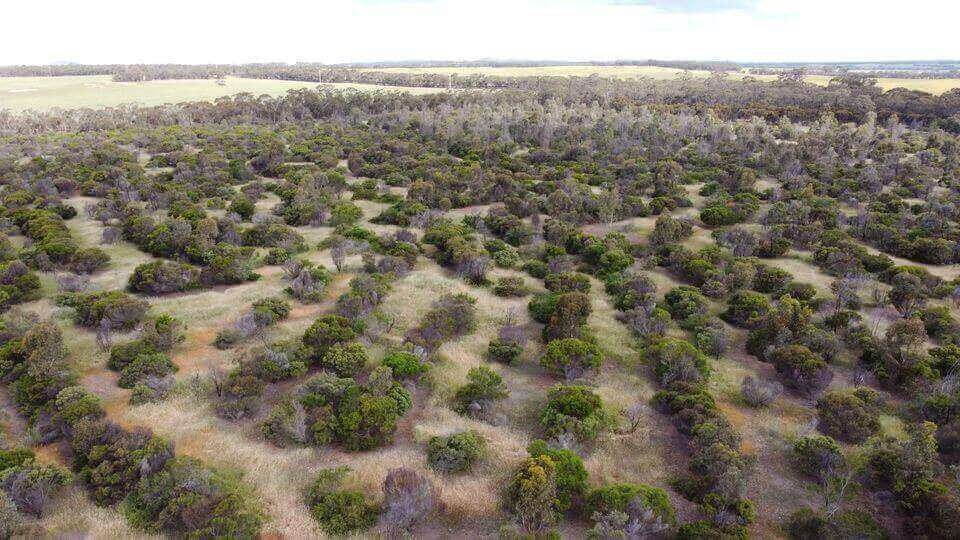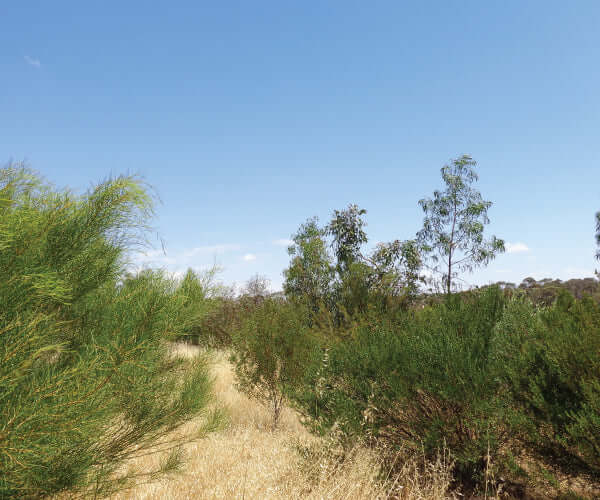Bridging The Biodiversity Gap Between Two Natural Reserves
Located on land traditionally owned by the Dja Dja Wurrung people in Wedderburn, Victoria, this forest is called Ploughshare. Named after the Ploughshare Wattle (Acacia gunnii) found in the area, this forest is playing a vital role in biodiversity protection while building habitat for native wildlife. It is acting like the missing piece of the puzzle by creating a native vegetation corridor between neighbouring properties.
The planting site adjoins many properties in the region, which are all working to restore the land and fill the gaps in vegetation to build crucial wildlife habitat. These properties include Skinners Flat reserve, the Woosang Block and Wychitella Nature Conservation Reserve. It also adjoins Nardoo Hills Reserve where Greenfleet is working on an innovative climate ready research project with Bush Heritage Australia.
In 2009, Greenfleet direct seeded native species across 262 ha of the property with the aim to create a resilient and biodiverse forest. More than 10 years on, the native forest is growing well, and you can see the incredible growth below.
Drone footage of Ploughshare taken in 2020, 11 years after the property was seeded.

The Ploughshare site is managed by Biolinking Australia, who in conjunction with Greenfleet, regularly monitors the progress of this planting. The property was sown with a Burford Direct Seeding machine, using mixtures of locally indigenous species according to the three predominant Ecological Vegetation Classes (EVCs) found on the site.
Species include Gold Dust Wattle (Acacia acinacea), Grey Mulga (Acacia brachybotrya) and Slaty She-Oak (Allocasuarina muelleriana). We also planted Kamarooka Mallee (Eucalyptus froggattii) which is a rare species listed as threatened on the Flora and Fauna Guarantee Act 1988.
The namesake of the property, Ploughshare, is a native wattle (pictured) that grows only to about a metre high. The scientific name for this native shrub is Acacia gunnii and it is also commonly known as Dog’s Tooth Wattle. This species is endemic to south-eastern Victoria and is found on this property.

Following best reforestation practice, Greenfleet focuses on planting local provenance. Using local seed, adapted to local environmental conditions, provides trees the best chance of survival. Local seed utilised for Ploughshare was sourced from Wedderburn, Wehla, Mt Korong, St Arnaud, Laurie Forest, Inglewood, Barrakee, Gre Gre, Kingower and Wooroonook.
The forest is also becoming home to native wildlife that can be found in the region. On a recent visit to the site, our forestry spotted this Bearded Dragon climbing one of the 11 year old trees. These fascinating reptiles can grow to 55cm and get their name because of the the spikes under their chin, which can change depending on their mood!
As this biodiverse forest continues to grow, they are capturing carbon from the atmosphere and taking critical climate action. Over its lifetime, the forest will capture over 72,000 tonnes of CO2-e. This is about what 16,800 average vehicles emit in Australia each year. It is also protected for years to come so that it can continue sequestering carbon and providing a wealth of environmental benefits to the region.
This is just one of the sites that Greenfleet has revegetated in this region. We are have a project at Ngulambarra, meaning 'meeting place' in Djaara language.
Location Size
262ha property in Wedderburn, central Victoria
Planting Dates
2009
Species
- Acacia acinacea
- Acacia brachybotrya
- Acacia deanei
- Acacia euthycarpa
- Acacia genistifolia
- Acacia montana
- Acacia paradoxa
- Acacia pycnantha
- Acacia verniciflua
- Acacia williamsonii
- Allocasuarina luehmannii
- Allocasuarina muelleriana
- Allocasuarina verticillata
- Callitris gracilis
- Dodonaea viscosa ssp cuneata
- Eucalyptus behriana
- Eucalyptus camaldulensis
- Eucalyptus froggattii
- Eucalyptus leucoxylon
- Eucalyptus melliodora
- Eucalyptus microcarpa
- Eucalyptus polybractea
- Eucalyptus viridis
- Melaleucala lanceolata
- Melaleuca uncinata
- Melaleuca wilsonii



